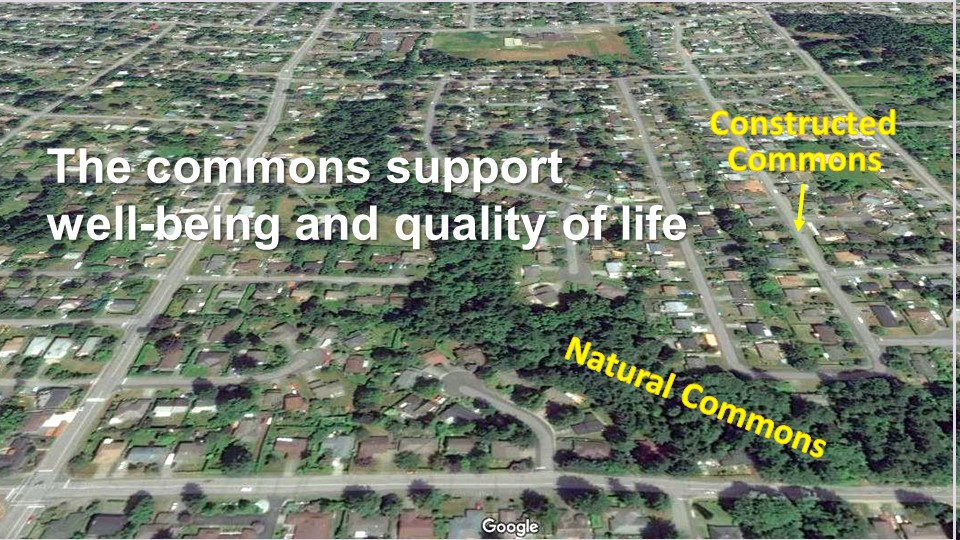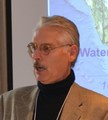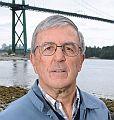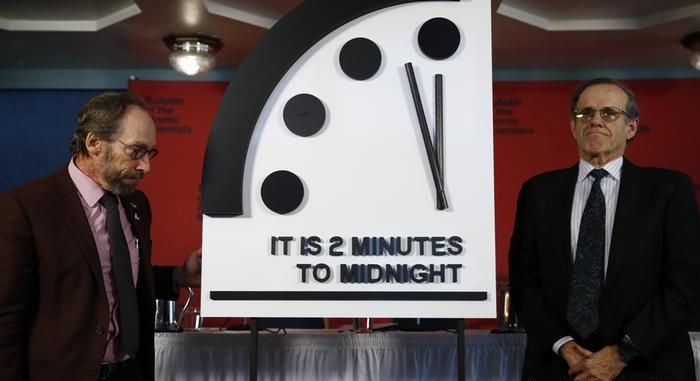Glaciers are Melting, the Amazon is on Fire: A Moment of Reckoning!
Note to Reader:
“This issue begins another season (September 2019 through June 2020) of the weekly Waterbucket News. Published by the Partnership for Water Sustainability in BC on Tuesdays, the series features champions who are leading changes in practice in the local government context,” states Kim Stephens, Partnership Executive Director. “Learning from these champions will help others achieve this over-reaching vision or goal: IMPROVE WHERE WE LIVE!
 “We have the brains to adapt to climate change, and it starts with restoring the water balance in the built environment. Do we have the will? What is the path forward? Last season, the Partnership introduced cascading themes to create a roadmap. 1) Shrink our destructive footprint while growing our regenerative footprint. 2) Restorative development results in sustainable stream restoration. 3) Get it right by reconnecting hydrology and ecology.
“We have the brains to adapt to climate change, and it starts with restoring the water balance in the built environment. Do we have the will? What is the path forward? Last season, the Partnership introduced cascading themes to create a roadmap. 1) Shrink our destructive footprint while growing our regenerative footprint. 2) Restorative development results in sustainable stream restoration. 3) Get it right by reconnecting hydrology and ecology.
“This season, we will build on these ‘big ideas’ to point the way to a desired future. And with this issue, we introduce an ‘elders in action’ theme. The message herein is a straightforward one: Learn from the experience of elders. Build on it. No need to reinvent the wheel. Get the wheel rolling!”

Learn from the experience of elders. Build on it. No need to reinvent the wheel ! > A challenge to Generations X, Y and Z – accept the inter-generational baton offered by those who can help you make a difference to improve where you live
“Throughout B.C. today, there are many ‘elders in action’ still doing good work, applying a lifetime of experience and passion to tackle local, regional and provincial matters. Now is the time to learn from their efforts and what it means to be knowledgeable, giving one’s time for the common good, working on solutions, and getting results. Elders in action are beacons of hope,” states Kim Stephens in the preface to the kick-off article in another season of the Waterbucket News.
“Greenland’s glaciers are melting; the Amazon forest is on fire. At a moment in history when the phrase “climate emergency” is top of mind for many, and given that there is no easy or quick fix, keep in mind that history repeats itself. Or, as the French writer Jean-Baptiste Alphonse Karr wrote in 1848, ‘the more things change, the more they are the same’.”
Learn from History
“Viewed in a global context, the 2010s are a “dark decade” – climate emergency, Donald Trump, an amoral collection of world leaders…… the Doomsday Clock is currently set at 2 minutes to midnight – matching 1953. Yet there is hope. Remember, understand and learn from history,” says Kim Stephens.
“The 1960s, also a dark decade, was followed by the “decade of the environment”. That is when many of us came of age. We were hopeful about the future. We believed that we could make the world a better place. We dedicated our professional lives to that vision. Today we are elders. Our mission continues.
“Fifty years ago, in 1969, three transformational moments occurred in rapid succession: Ian McHarg published his legendary book “Design with Nature” (April); the Cuyahoga River in Ohio caught fire (June); and Neil Armstrong landed on the moon (July). For many of our generation, these served as calls to action to improve where we live. Immediately, governments mobilized in response to public demand.
“The 1969 Cuyahoga River fire was quickly extinguished, but it sparked public outrage and prompted political action that led to the creation of the US Environmental Protection Agency the following year. In April 1970, the first Earth Day was held. 1971 saw the creation of Environment Canada. The “decade of the environment” was well and truly launched. The world seemed on its way to becoming a better place.
“In 2019, will the record rate of melting of Greenland’s glaciers at the same time as the Amazon forest is burning be the “Cuyahoga River moment” for Generations X, Y and Z?”

Elders in Action in B.C. – Three Examples
“A half-century ago, society was galvanized by a daunting challenge. Learn from elders how to do it again. Three examples of ‘elders in action’ underscore why knowledge, experience and wisdom built-up over time are invaluable in first understanding what needs to be done, and then, how to get it done. When time is of the essence to change our practices, society no longer has the luxury of taking decades to re-invent the wheel,” emphasizes Kim Stephens.

Artist’s conception of the new Lions Gate facility
Lions Gate Treatment Plant, Metro Vancouver
Motivated by a shared vision that “the future is here, NOW” for restoration of the aquatic environment in Burrard Inlet, three engineers with distinguished careers have been passionate and relentless in collaborating as an interdisciplinary team to convince the Metro Vancouver Regional District to re-think the treatment components for the new Lions Gate Treatment Plant.
Glen Parker (industry) had worked around the world on petroleum industry projects before retiring to become an activist streamkeeper. Dr. Don Mavinic (academia) is an internationally recognized expert in sewage treatment. Dr. Ken Ashley (government) is also internationally recognized. His expertise is in aquatic ecology.
Drawing on their unique combination of expertise, these three ‘elders’ focussed political attention on the need to be visionary and dare to be bold in going beyond what is currently minimum standard of practice.
Not Good Enough! –
 In 2013, new federal regulations spelled out secondary treatment as the minimum standard required for the new Lions Gate facility. Not good enough, said the three ‘elders’.
In 2013, new federal regulations spelled out secondary treatment as the minimum standard required for the new Lions Gate facility. Not good enough, said the three ‘elders’.
“Recent studies have shown harmful chemicals and pharmaceuticals present in local waters and in juvenile salmon. How stupid would it be to build a $778 million plant and have it out of date before it even opened,” says Ken Ashley, BCIT Rivers Institute.
 “By making presentations to community groups and business leaders, we have experienced how public and political sentiments can be shifted,” states Glen Parker, North Shore Streamkeepers.
“By making presentations to community groups and business leaders, we have experienced how public and political sentiments can be shifted,” states Glen Parker, North Shore Streamkeepers.
“Without political support, nothing happens. Many elected representatives seem to operate on the model that anything that gets them votes is by definition ‘right’. This may work for short term issues but longer term issues need a different model, or efforts of ‘elders’ to make the wind blow in the ‘right’ direction.”

Methodology for Valuation of Nature’s Assets
A second example of “elders in action” is Tim Pringle and his breakthroughs in pioneering the Ecological Accounting Process (EAP), an initiative to reconnect hydrology and ecology in local creeksheds. Tim Pringle was the inaugural winner of the B.C. Land Champion Award in 2010.
EAP constitutes a “package of innovation” in terms of its philosophy, strategy and deliverables. The focus is on the local government context where practitioners are concerned about practical realities of managing use and conservation of land and ecological services.
Tim Pringle developed the parallel concepts of the “natural commons” (stream corridors and other natural systems) and the “constructed commons” (roads, utilities, schools) as a way for residents, elected persons, and practitioners to understand that ecological services deserve equal consideration when developing municipal asset management strategies.
Well-being & Quality of Life –
 “The natural commons and constructed commons are core local government services essential to social, economic and environmental well-being. This is a foundational principle for a fully integrated approach to asset management that truly aspires to achieve ‘sustainable service delivery’,” states Tim Pringle.
“The natural commons and constructed commons are core local government services essential to social, economic and environmental well-being. This is a foundational principle for a fully integrated approach to asset management that truly aspires to achieve ‘sustainable service delivery’,” states Tim Pringle.
“An EAP success story is the Town of Comox. The Town modified its land planning decision process for a Draft Neighbourhood Concept Plan when staff recognized that ecological services are not just an add-on. They are, in fact, core municipal services.”

Mitigating a Catastrophic Rockslide on the Seymour River, North Vancouver
A third example is the Seymour River rockslide in North Vancouver that occurred in December 2014. 80,000 tons of rock slipped off the west bank, reshaped the river and created a barrier to fish passage. Shaun Hollingsworth, chair of the Seymour Salmonid Society, coordinated the response to save the naturally occurring salmon runs in the Seymour.
 “After the slide there was a lot of ‘what should we do’, ‘we are not the lead on this issue’, ‘we need more information from so and so’, etc. What Shaun did was corral all the stakeholders in the form of a round table and sort out the issues, the information needed, and a path to a decision. He is an old dog who had worked with all the groups on other issues over the years. He was able to bring them all together,” explains Glen Parker, also a Salmonid Society Director.
“After the slide there was a lot of ‘what should we do’, ‘we are not the lead on this issue’, ‘we need more information from so and so’, etc. What Shaun did was corral all the stakeholders in the form of a round table and sort out the issues, the information needed, and a path to a decision. He is an old dog who had worked with all the groups on other issues over the years. He was able to bring them all together,” explains Glen Parker, also a Salmonid Society Director.
Holistic Approach –
 “Thanks to the influence of Glen Parker, Shaun Hollingsworth and Ken Ashley, I now include ‘fish’ as a resource, in my holistic approach to modern liquid waste management,” adds Don Mavinic.
“Thanks to the influence of Glen Parker, Shaun Hollingsworth and Ken Ashley, I now include ‘fish’ as a resource, in my holistic approach to modern liquid waste management,” adds Don Mavinic.
“Now, there is no looking back…. ‘elders power, combining mind and action’.”
Call to Action: It’s 2 Minutes to Midnight
“Elders are leading by example to bridge a demographic gap until Generations X, Y and Z take the baton. Learn from our experience. Build on it. Don’t reinvent the wheel. Get the wheel rolling. Time is of the essence. It is 2 minutes to midnight. The future is here, NOW,” concludes Kim Stephens.


